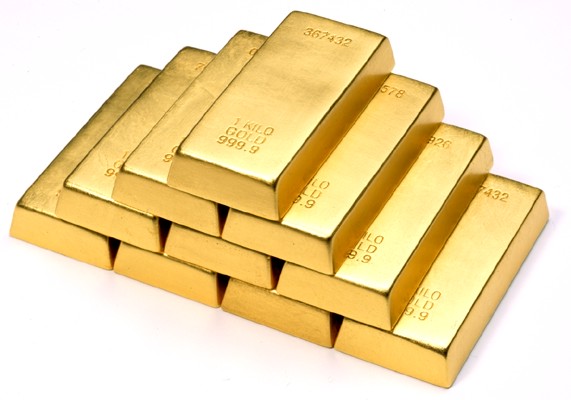Gold deposit schemes finding takers
 With gold prices pushing northward aggressively, the gold accumulation schemes offered by jewellers have started finding takers again.
With gold prices pushing northward aggressively, the gold accumulation schemes offered by jewellers have started finding takers again.
Gold prices are currently ruling at Rs 15,335 for 10 grams, after having reached an all-time high of Rs 15,745 on February 21, an increase of nearly Rs 3,000 in just 45 days.
Typically, under an accumulation scheme, a buyer pays the jeweller a fixed sum of money every month to own her choice of jewellery on a later date. The money paid is converted into gold based on the price of gold on the day of each monthly deposit. The buyer keeps accumulating gold in this way over a fixed timeframe, say 12 or 24 months, by when it would have reached respectable proportions and can be harvested for one's own use or for a child's marriage, etc.
Branded jewellery major Tanishq, for example, offers a scheme called Golden Harvest, while others offer schemes variously called 'Swarn Savings Scheme', 'Gold Saving Account', 'Gold Deposit Scheme' and 'Jewellery Savings Scheme', etc.
India Post, which also sells gold coins, is set to start offering a Gold Accumulation Plan in the next couple of months. Under the initiative, money can be deposited anytime during a month and one would get gold coins or bars in return, instead of jewellery.
Interestingly, most jewellers pay a bonus too. The bonus amount gets added to the deposits made and can be used for purchase of jewellery at the end of the pre-decided tenure.
Such schemes have been in vogue across the country for decades. Now, with high gold prices taking jewellery beyond the reach of the common man, their popularity has started soaring.
A reputed Mumbai-based jeweller says over 100 customers have opted for such a scheme at his store.
Keyur Shah, associate director for India at World Gold Council, concedes as much. "Lots of people are looking into it because of the volatility in prices."
But do these schemes really help beat the price volatility?
Sanjeev Agarwal, MD, Reva Corp, a retail jewellery chain says the process allows one to average out the purchase price by buying each month. "Price being so high, saving is better than paying a lump sum and buying gold," he says.
This has long been a method used by women to set aside some money on a regular basis and purchase gold later. "If the money lies with you, you would spend it. Here, it accumulates over a period," says Agarwal.
According to him, some jewellers also run a kitty, wherein a group of people pool money for 6-12 months and one member gets to use it to buy gold each month and another the next month and so on.
For all that, however, the arrangement has a flipside too.
Credibility of jewellers is a major issue. Agarwal of Reva says one should be fully convinced that the jeweller would honour the deal when the investment matures. And those with transferable jobs should opt for a jeweller which has branches in multiple cities.
Shah of World Gold Council suggests the buyer note down the price of gold on the day of each deposit so as to ensure he gets is money's worth of gold and is not short-changed in the end.
The depositor should note that once she gets into such a scheme, there is no shopping around and she must buy from the range of jewellery available with that jeweller. Agarwal suggests people go to a jeweller offering a reasonable range in terms of design.
Despite the bonus offered by jewellers, the returns are not competitive enough, compared with the rates offered by banks.
Take for instance Tanishq's Golden Harvest scheme wherein if you pay Rs 2,000 each for 12 months, you get a bonus of Rs 1,200. This means, at the end of 12 months, you would have gold of Rs 25,200 (Rs 24,000 + bonus Rs 1,200). Had you put this money in a recurring deposit with the State Bank of India (SBI), at the prevailing rate of 8.5% for a year, you would have earned Rs 26,104 (after compounding quarterly), Rs 904 more than what Tanishq offers.
But then, unlike in the Tanishq scheme, someone going for the SBI recurring deposit would have to buy gold at one go and not at different price levels.
Those looking at such schemes solely as an investment avenue can consider investing in gold exchange traded funds (ETFs).
Gold ETFs are mutual funds investing in gold, which can be bought or sold on stock exchanges. You can buy as low as half or one gram at a time and hold gold in a demat account. Currently, five gold ETFs are listed on the NSE.
Accumulating gold is easier here as one doesn't have to worry about purity, bank lockers and gold insurance. You can accumulate gold over a period and average the price. Just sell the units accumulated over a period and use the proceeds to buy gold jewellery when the need arises. Who knows, you might not want to buy gold jewellery in the end.
Khyati Dharamsi DNA